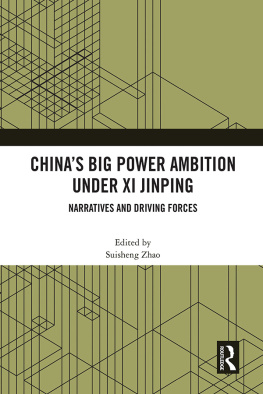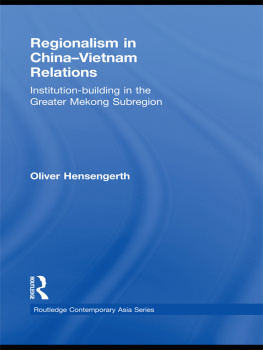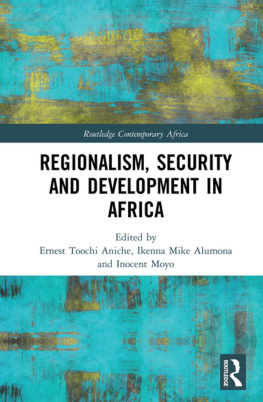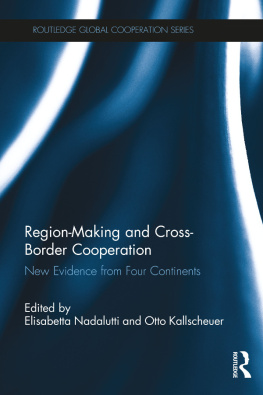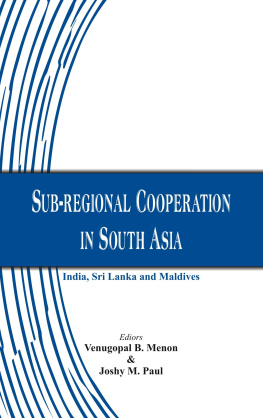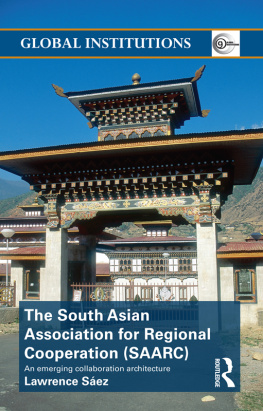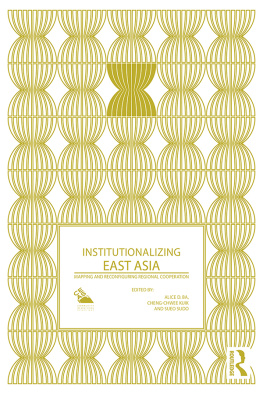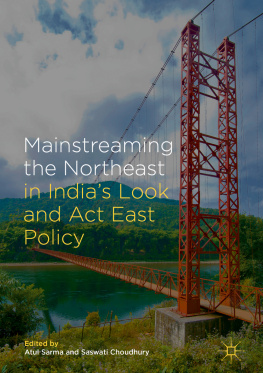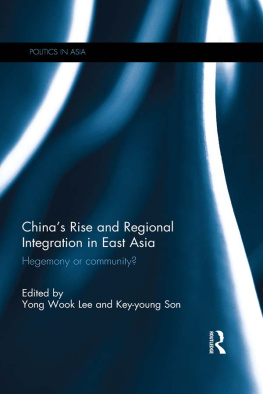China and East Asian Regionalism
To convey the image of a responsible power willing to contribute to regional stability and cooperation, China has shifted from a single-minded preference for bilateralism to an active participation in East Asian regionalism in the recent decades. This development has inspired discussions over whether a rising China could play a leadership role in building an institutionalized architecture for regional cooperation in East Asia. Nevertheless, this has not happened as East Asian regional cooperation and relevant activities remain mostly ad hoc and informal, especially when compared to regions such as Europe.
To what extent has China contributed or constrained the development of regionalism in East Asia? What are Chinas desired roles and objectives in East Asian regional cooperation? What is the level of trust that other regional players have for China in regional cooperation? This book seeks answers to these questions by exploring Chinas motivations and strategic calculations as well as its policy practices in East Asian economic and security cooperation.
This book was published as a special issue of the Journal of Contemporary China.
Suisheng Zhao is Professor and Executive Director of the Center for China-US Cooperation at Josef Korbel School of International Studies, University of Denver. A founding editor of the Journal of Contemporary China, he is the author and editor of more than ten books.
China and East Asian Regionalism
Economic and Security Cooperation and
Institution-Building
Edited by
Suisheng Zhao
First published 2012
by Routledge
2 Park Square, Milton Park, Abingdon, Oxon, OX14 4RN
Simultaneously published in the USA and Canada
by Routledge
52 Vanderbilt Avenue, New York, NY 10017
Routledge is an imprint of the Taylor & Francis Group, an informa business
2012 Taylor & Francis
This book is a reproduction of articles from the special section China and Regional Cooperation and Institution-Building in East Asia in the Journal of Contemporary China. The Publisher requests to those authors who may be citing this book to state, also, the bibliographical details of the special issue on which the book was based.
All rights reserved. No part of this book may be reprinted or reproduced or utilised in any form or by any electronic, mechanical, or other means, now known or hereafter invented, including photocopying and recording, or in any information storage or retrieval system, without permission in writing from the publishers.
Trademark notice: Product or corporate names may be trademarks or registered trademarks, and are used only for identification and explanation without intent to infringe.
British Library Cataloguing in Publication Data
A catalogue record for this book is available from the British Library
ISBN13: 978-0-415-61814-4
Typeset in Times New Roman
by Taylor & Francis Books
Publishers Note
The publisher would like to make readers aware that the chapters in this book may be referred to as articles as they are identical to the articles published in the special issue. The publisher accepts responsibility for any inconsistencies that may have arisen in the course of preparing this volume for print.
Content
Part I
Chinas Strategic Thinking on East Asian Regionalism
Suisheng Zhao
Gilbert Rozman
Ren Xiao
Hidetaka Yoshimatsu
Part II
China and Regional Economic and Trade Cooperation
Margaret M. Pearson
Ka Zeng
Evelyn S. Devadason
Dilip K. Das
Part III
China and Regional Security and Energy Cooperation
James Clay Moltz
Jing-Dong Yuan
Mingjiang Li
Gaye Christoffersen
SUISHENG ZHAO*
This paper explores how Chinas strategic motivations and calculations have both motivated and constrained its participation in East Asian regional cooperation. It arguesthatChinas participation in regional economic and security cooperation is motivated first of all by the calculation of Chinas domestic interests to create a peaceful peripheral environment for its economic growth and political stability, particularly its frontier security and prosperity. The realist interests to enhance Chinas position in power competition with other major players in the region, particularly Japan and US, also play an important part in Chinas strategic calculation. These interest calculations, however, also set limits on Chinas participation in regional cooperation. These interest calculations have also shaped Chinas preference for an informal approach, emphasizing voluntarism and consensus building rather than legally binding resolutions, toward regional cooperation. This soft approach is a major barrier for many regional institutions to move beyond the stage of talking shops to effectively resolve conflicts in the region.
China has become a primary mover of regional economic and security cooperation in East Asia since the mid-1990s when Beijing began to shift from a single minded preference for bilateralism to embrace multilateralism. An enthusiastic member in regional institutions such as ASEAN + 3, ASEAN Regional Forum (ARE), the Asian Pacific Economic Cooperation (APEC), and East Asian Summit (EAS), Beijing also launched the Shanghai Cooperation Organization (SCO) and hosted the Six-Party Talks to resolve the North Korean nuclear crisis. What are the driving forces and approaches of Chinas participation in regional cooperation and institution-building? Seeking answers to this important question, this paper argues that Chinas strategic shift is motivated first of all by Chinas domestic interests to create a peaceful peripheral environment for its economic growth and political stability, particularly its frontier security and prosperity. The realist interests to enhance Chinas position in competition with other major powers in the region, particularly Japan and US, also play an important part in Chinas strategic calculation. These interest calculations have also shaped Chinas preference for an informal approach, emphasizing voluntarism and consensus building rather than legally binding resolutions, toward regional cooperation. This soft approach is a major barrier for many regional institutions to move beyond the stage of talking shops to effectively resolve conflicts in the region.
Building a network of multilateral institutions in Chinas periphery
As part of the effort to build a peaceful and stable peripheral environment for its own domestic interests, China began to formulate a regional policy known as zhoubian zhengce (periphery policy) or mulin zhengce (good neighboring policy) in the late 1980s. Historically, China has been wary of participation in multilateral institutions because of the concern over the possible erosion of state sovereignty and the possible exploitation by the US and other powers to constrain Chinas actions. The post-Cold War era, however, has witnessed the rise of multilateralism in global as well as regional affairs. This has put increased pressure on Chinas traditional bilateral diplomacy. In East Asia, many of Chinas small neighbors, particularly members of the ASEAN nations, have preferred to deal with China collectively in multilateral settings as part of their strategic hedging against Chinas rising military capability and political influence. Working with China merely on a bilateral basis could put them in a position of disadvantage as Beijing may seek to exploit divisions among them to assert its influence. To avoid this possibility, they have sought to bring China and other major powers into a multilateral setting that gives them collective bargaining power and the ability to enhance their security by embedding China in a web of multilateral structure. This power of collective bargaining is particularly important for the small states that still retain areas of contestation in relations with an increasingly powerful China, which has maintained assertive positions on its territorial and sovereignty claims in the South China Sea and has not hesitated to flex its military muscles to reinforce its positions. It was this consideration that motivated Southeast Asian countries to start the ASEAN + 3 and ASEAN + 1 process to work with China in the auspice of the ASEAN as a collective bargaining institution.


